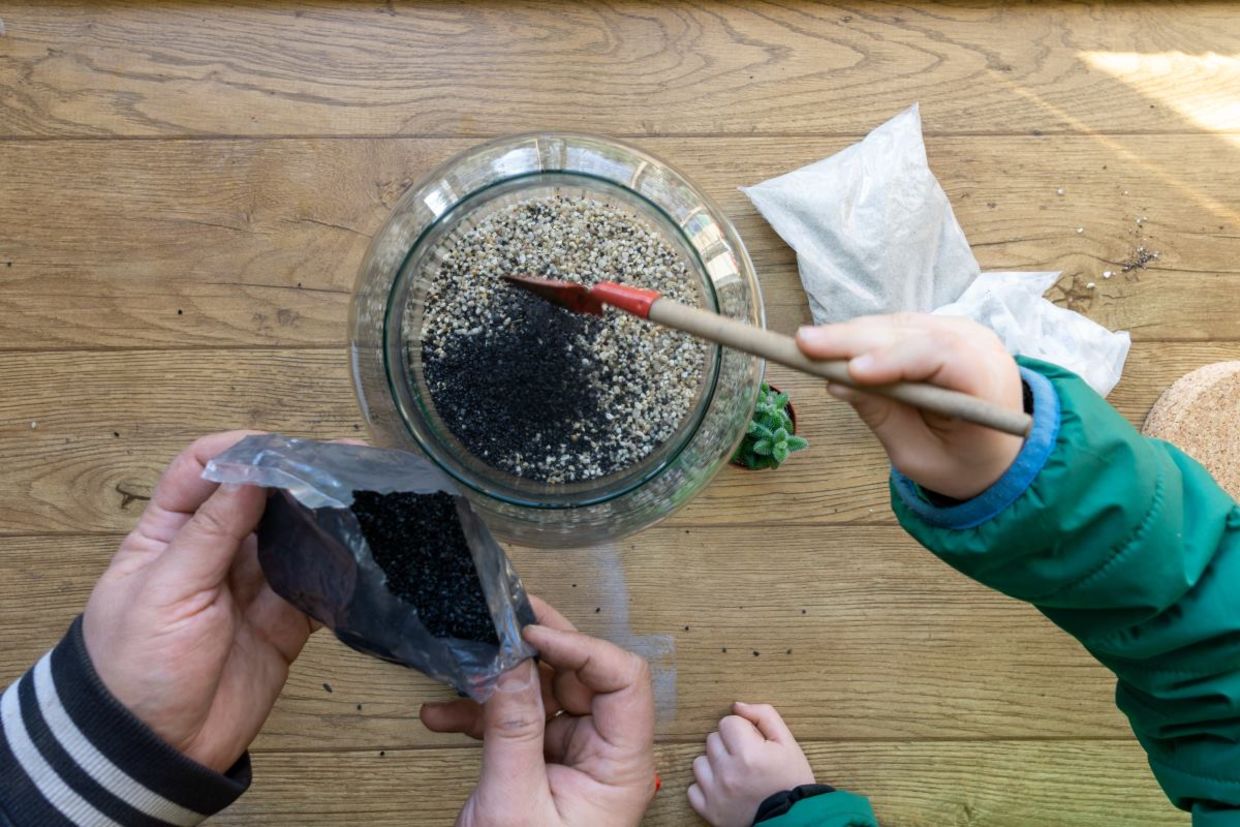Terrariums add beauty to your home. There is an art to making these indoor gardens and while many look very intricate and labor intensive, creating your own DIY terrarium is actually easy to do.
A terrarium is an indoor garden in a container that holds plants and decorations, according to The Spruce. There are four levels in every terrarium, gravel, moss, soil, and plants. The plants receive water through the soil and evaporation returns moisture to the soil. From simple to elaborate these self-sustaining ecosystems that need minimum care can last for years. Here is a step-by-step guide to making your own terrarium.
Choose Your Container
There are so many things you can use as containers for your terrarium explained the terrarium tribe website. You can use glass or plastic, round or square and pretty much anything that is waterproof and transparent. While there isn’t a maximum size, there is a minimum size to make a fully functioning terrarium. You need to be able to give your plants at lease one third of the container as free space for gas exchange but more is better. A larger terrarium means more plants, decorations, and room to get really creative.
View this post on Instagram
Pick Your Plants
Since a closed terrarium is actually a miniature tropical climate with humidity, warmth, and low light, you have to carefully choose the plants that will thrive, reported BBC’s Gardeners World.com. An open container, on the other hand, doesn’t have the humidity and is a better environment for cacti, succulents, and air plants.
The best plants for a closed terrarium are nerve plants that have beautiful patterns and are slow growing, asparagus ferns, peperomia, anything from the pilea genus like the Chinese money tree, and pothos which are nearly indestructible plants even if you have a brown thumb.
Create Drainage
Unlike a planter, a terrarium does not have drainage holes so you have to create a drainage system, cautions The Spruce. First add a layer of gravel or crushed stones at the bottom of the terrarium. A tall narrow container will require a deeper layer of drainage. Next, add about a quarter inch to half inch layer of activated charcoal on top of the stones. This will also control odors.

(Gabor Tinz / Shutterstock.com)
Add Moss and Potting Soil
The next step is to add a layer of moss over the stones and charcoal as a buffer before putting soil in your terrarium. Add at least two inches of moist potting soil; you can purchase the right soil mix at a plant nursery or garden center. Make sure not to add too much soil so there is room for your plants to grow. Do not add extra fertilizer to your terrarium.
View this post on Instagram
Place Your Plants
It’s now time to add the plants but before you do, you should sketch out where each plant should go. Choose the locations for your large and small plants to add different dimensions to your terrarium. Make sure that you properly prepare your plants by pruning or trimming the roots which will slow growth before adding to your terrarium.
View this post on Instagram
Water the terrarium
The last step in creating your DIY terrarium is to add water, according to The Spruce. Since not much water is needed, use a spray bottle or small watering can with a rose attachment. The plants should be damp but not wet. Afterwards, clean up any dirt on the sides of the container with a paper towel and your beautiful indoor garden is ready to be displayed.

(Inni / Shutterstock.com)







